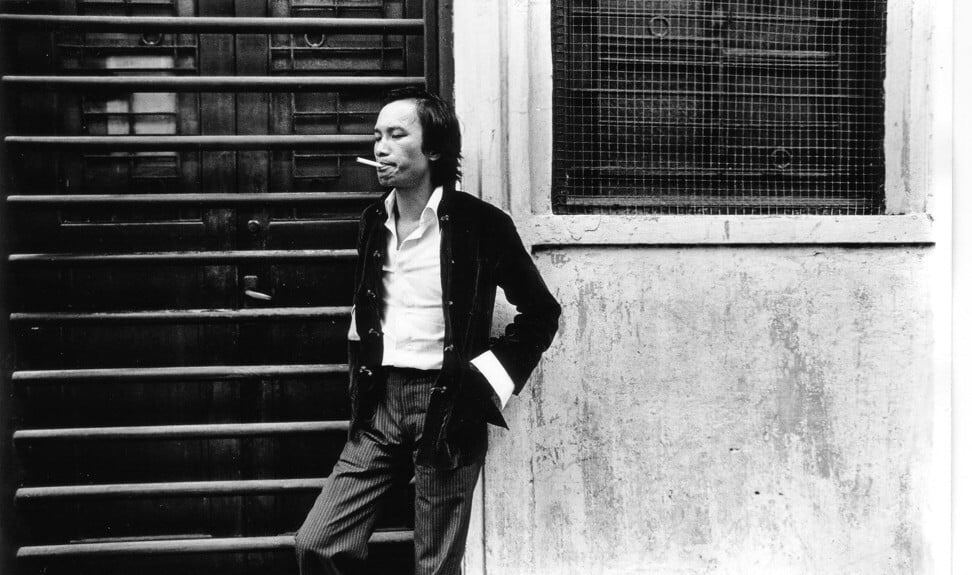
What John Woo action classics A Better Tomorrow and The Killer owe to his lone wuxia film Last Hurrah for Chivalry
- The martial arts scenes in Woo’s only wuxia film lack a defining style, but their length and the way they are staged show where the director’s talents lay
- Its male bonding and notions of chivalry and brotherhood hark back to his mentor Chang Cheh’s work, but also hint at what is to come in A Better Tomorrow
Woo was already a star director – the Cantonese opera film Princess Chang Ping had catapulted him to the front rank in 1976 – yet by his own admission, he had yet to develop a unique and identifiable style.
Woo was signed to Golden Harvest, and although they planned for him to continue making money-spinning comedies for the company – which he did – they asked him to direct a one-off action movie. The result was the wuxia film Last Hurrah for Chivalry.
Last Hurrah bundles many martial arts tropes together, but still finds its way to a satisfying conclusion. The story features two swordsmen who forge a bond and work together to take revenge on a manipulative double crosser. Tsing Yi (Damian Lau Chung-yan, already a successful TV actor) and Chang (Wai Pak) are caught up in a war between two clans, and after proving themselves against various adversaries, join up to defeat an evil mastermind.
Why Peter Chan’s first martial arts film shoot didn’t go smoothly
The martial arts, directed by Fung Hak-on, who also had a major supporting role, are neatly choreographed, but lack cohesion. Most of the swordfighting scenes seemed old-fashioned at the time, featuring set pieces which lacked spontaneity, but a one-on-one duel featuring Fung is lightning quick and realistic looking.
Woo has said that he initially suggested making a police story when Golden Harvest asked him to direct an action film, and he even had a script ready that had been written by a friend. But the company refused, and demanded that he make a wuxia, even though the genre was long dead at the box office.

Woo said that he also wanted to use the project to direct a homage to his former mentor Chang Cheh.
The comic elements of the film, which seem incongruous today, were included as a sop to the tastes of the local audience of the time. The comedic Drunken Master had been a big hit in 1978, and comedy kung fu was more popular than straight action.
My heroes fight for justice, like ancient Chinese knights, and they sometimes need to sacrifice themselves in their fight
“People only went to the comedies and action comedies, he said. “They didn’t want to watch any of the classical movies.”
The themes and stylistics of Woo’s later work are present in a nascent form in Last Hurrah, and the careful staging of the action – and the sheer length of the action scenes – showed where his talents lay. There is some experimentation, including wipes (when the transition between scenes is shown by a ‘wipe’ effect on the screen) and some stylish dolly and tracking shots (which use tracks to move the camera smoothly along) in the earlier scenes.
The zoom lens, a much derided component of martial arts cinematography in the 1960s and 1970s, was not used at all.

“A lot of Woo’s theatricality and love for big swooning emotions show up for the first time in Last Hurrah,” says novelist and film historian Grady Hendrix, who introduced the film for its Criterion-label release in the US.
“The juxtaposing of the heroes’ faces, the way the hero enters from the side as if he’s about to sing an aria, the colour-coded costumes – he’s constantly reminding the audience of the artificiality of what we are watching. This would flower into a full-blown style when he made A Better Tomorrow,” Hendrix says.
The wuxia ideals of chivalry and brotherhood, which are evident in Last Hurrah, formed the basis of classic Woo works like A Better Tomorrow and The Killer . “My heroes fight for justice, like ancient Chinese knights,” Woo told this writer in an interview in 1998, “and they sometimes need to sacrifice themselves in their fight.”
John Woo takes first stab at superhero genre with Stan Lee’s Monkey Master
Many themes are taken directly from Chang Cheh, and the male bonding and the notion of loyalty in Last Hurrah directly reference Chang’s work. Such themes reappeared later in A Better Tomorrow, The Killer, and so on, and Woo expressed them in a more sophisticated manner than his mentor – he proved to be a much better psychologist than Chang.
Although Woo generally references foreign influences such as Jean-Pierre Melville and Sam Peckinpah in interviews with international media, when interviewed at home he always notes the influence of his former boss Chang.
“After watching [Chang’s] films like The One Armed Swordsman , The Wandering Swordsman , and Vengeance! , I felt that I could possess the same kind of youthful romanticism as those heroes,” Woo wrote in his introduction to Chang’s 2002 autobiography.

“During the times that I felt lost and uncertain of my abilities and my future, he encouraged me to think about directing, which was at that time an impossible dream for a newcomer. Knowing my potential, he found my bearings for me, and helped me foster my confidence and self-esteem.
“Looking back, Chang Cheh not only taught me how to direct, but the way of life,” Woo wrote.
In this regular feature series on the best of Hong Kong martial arts cinema, we examine the legacy of classic films, re-evaluate the careers of its greatest stars, and revisit some of the lesser-known aspects of the beloved genre. Read our comprehensive explainer here.
Want more articles like this? Follow SCMP Film on Facebook
